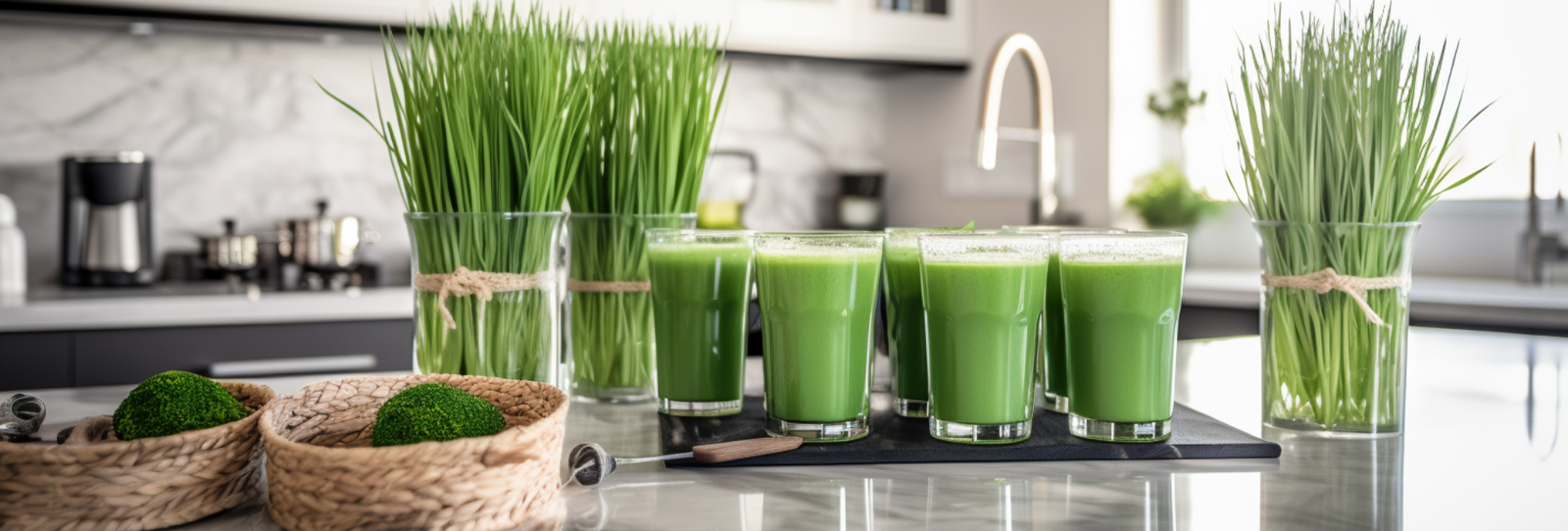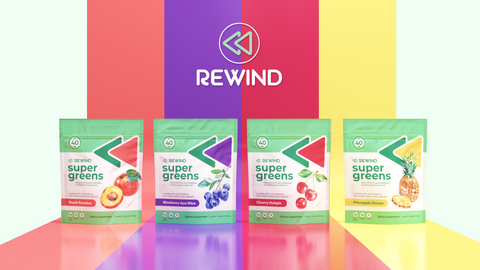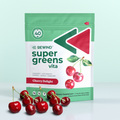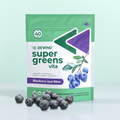
by Erika Albertini, PT, DPT August 02, 2024 8 min read
When considering superfoods, two often come into the spotlight: Wheatgrass and Barley Grass. Both are young grasses of their respective cereal grains. They are lauded for their nutritional profiles and health benefits. However, a common question arises: which is healthier? Let’s delve deep into the nutritional content and health benefits of each to help you make an informed decision.
Wheatgrass and Barley grass are popular superfoods often praised for their impressive health benefits. Both are young grasses of their respective cereal grains, packed with nutrients and antioxidants. Each has unique properties that may make one more beneficial depending on individual health needs. Here’s a comparison:
Wheatgrass contains significant amounts of chlorophyll, vitamins A, C, and E, iron, magnesium, calcium, and amino acids. It is particularly noted for its high chlorophyll content, which can help detoxify and boost the immune system.
Barley Grass is rich in vitamins A, B1, B2, B6, B12, C, E, and K and minerals like potassium, calcium, magnesium, iron, and enzymes. It is known for its high content of SOD (superoxide dismutase), an enzyme with powerful antioxidant properties.
Wheatgrass: The high chlorophyll content in wheatgrass acts as an antioxidant, which helps reduce oxidative stress and protect cells from damage.
Barley Grass: Contains higher levels of SOD and other antioxidants like lutonarin and saponarin, which can reduce inflammation and oxidative stress more effectively.
Wheatgrass: Aids digestion through its high fiber content and contains enzymes that help break down food and absorb nutrients. It also has mild laxative effects, which can improve bowel movements.
Barley Grass: Enhances digestion by promoting healthy gut bacteria and improving bowel health due to its high fiber and chlorophyll content.
Wheatgrass: Boosts the immune system due to its high content of vitamins and antioxidants, which help fight infections and diseases.
Barley Grass: Supports immune function through its high levels of vitamins, minerals, and enzymes, which help maintain overall health and prevent illnesses.
Both wheatgrass and barley grass are nutrient-rich superfoods with several common health-promoting properties. Here are their key similarities:
Vitamins: Both grasses are rich in vitamins A, C, and E, essential for vision, immune function, and skin health. They also contain a range of B vitamins that support energy production and cell metabolism.
Minerals: Both contain significant amounts of iron, magnesium, and calcium, essential for oxygen transport, muscle and nerve function, and bone health.
Antioxidants: Both are high in chlorophyll, which helps detoxify the body and boost the immune system. They also contain various antioxidants that protect cells from oxidative stress and inflammation.
Amino Acids: Both grasses provide a wide range of amino acids, including essential amino acids that the body cannot produce independently.
Enzymes: Both contain enzymes like superoxide dismutase (SOD) that help reduce oxidative stress and support cellular health.

Wheatgrass and barley grass are nutrient-rich superfoods.
Despite their similarities, Wheatgrass and Barley grass have distinct differences in their nutrient profiles that may influence their health benefits.
Wheatgrass:Higher in vitamins E and C, which are potent antioxidants and support skin health and immune function.
Barley Grass: Contains vitamins K and B12, crucial for blood clotting, bone health, and red blood cell formation.
Wheatgrass: Richer in zinc, which supports the immune system and wound healing.
Barley Grass: Higher in potassium and phosphorus, essential for fluid balance, muscle contractions, and energy metabolism.
Wheatgrass:Known for its high chlorophyll content and detoxifying properties.
Barley Grass: Contains higher levels of SOD and other unique antioxidants like lutonarin and saponarin, which provide more robust protection against oxidative stress and inflammation.
Wheatgrass: Contains enzymes like cytochrome oxidase, which aids in energy production and cellular respiration.
Barley Grass: Includes enzymes like protease and amylase, which help digest proteins and carbohydrates.
Wheatgrass: Particularly noted for its mild laxative effects and benefits for digestion and detoxification.
Barley Grass:Promotes healthy gut bacteria and has a more comprehensive array of enzymes supporting overall digestive health.

While wheatgrass and barley grass are generally safe for most people, there are some potential side effects and contraindications to be aware of:
Wheatgrass: Some individuals may experience nausea, headaches, or diarrhea when they first start consuming wheatgrass, especially in large amounts.These symptoms typically fade within two weeks or after your body has adjusted to the wheatgrass.When you first begin consuming wheatgrass, start with a small amount and gradually increase it to the recommended dosage. This gradual approach helps your body adjust to digesting wheatgrass.
Avoid taking wheatgrass if you are pregnant, or breastfeeding. Some people, especially those with wheat or grass allergies, may experience allergic reactions.
Barley Grass: Be aware that barley grass products may contain high levels of micronutrients like vitamin K and potassium. If you are on blood thinners such as warfarin, have kidney disease, taking medications, or have any underlying health conditions, consult with a healthcare provider before using barley grass supplements.
Additionally, those with celiac disease or gluten sensitivity should exercise caution. Although gluten is only found in the seeds of the barley grain, there can be a potential risk of cross-contamination.
The appropriate dosage of wheatgrass and barley grass can vary depending on the form you are consuming:
It's always best to start with a lower dose and gradually increase it to see how your body reacts.
Incorporating wheatgrass and barley grass into your daily diet can significantly enhance your overall health. Both can be consumed in various forms, including fresh juice, powders, capsules, or even as part of super greens powders. Here's how you can integrate these nutrient-rich grasses into your routine for maximum benefits:
Wheatgrass Juice: Start your day with a shot of fresh wheatgrass juice. Its potent detoxifying properties can help cleanse your system and provide a burst of energy.
Barley Grass Smoothie: Blend barley grass powder with fruits like bananas, apples, and berries to create a nutritious and delicious smoothie. This can be a perfect breakfast or a mid-day snack.
Green Powder Drinks: Super greens powders, such as those containing wheatgrass and barley grass, can be mixed with water or your favorite juice. These powders offer a convenient way to get a concentrated dose of greens.
Healthy Greens Smoothies: Add a scoop of greens powder to your morning or post-workout shake. This ensures you get your daily intake of essential vitamins and minerals. Get some recipe inspiration here.
Incorporate into Meals: Sprinkle wheatgrass or barley grass powder into soups, salads, and even baked goods. This enhances the nutritional value and adds a subtle flavor to your dishes.
Real-life stories inspire and motivate us to make healthier choices. Here are a couple of testimonials from individuals who have experienced the benefits of wheatgrass and barley grass:
Jane's Story: "I started incorporating wheatgrass into my daily routine about six months ago. Initially, I was skeptical about the benefits but struggled with low energy levels and frequent colds. Within a few weeks, I noticed a significant improvement in my energy levels. I felt more vibrant and less prone to illnesses. Wheatgrass has truly been a game-changer for my immune system!"
Dan's Experience: "As someone with digestive issues, barley grass was recommended to me by a friend. I began adding barley grass powder to my morning smoothies, and within a month, my digestive health improved dramatically. I no longer felt bloated after meals, and my gut health improved. Barley grass has become a staple in my diet, and I wouldn't go a day without it."
Both wheatgrass and barley grass offer substantial health benefits and are excellent additions to a balanced diet. Wheatgrass is particularly beneficial for detoxification and boosting the immune system, while barley grass stands out for its superior antioxidant properties and digestive health benefits. They can be conveniently incorporated into your daily health routine through fresh juices, smoothies, super greens powders, and various recipes.
Ultimately, the choice between wheatgrass and barleygrass comes down to personal preference and individual health needs. Some may prefer the taste of one over the other or find that one better agrees with their digestive system. Both are excellent additions to a healthy diet and can provide numerous health benefits.
Wheatgrass and Barley grass are key ingredients in Rewind Greens super greens powder, providing a powerful combination of nutrients for those looking to incorporate these superfoods into their diets. Together, these super greens enhance the nutritional value of Rewind Greens, making it an excellent choice for those looking to improve their diet with natural, plant-based ingredients.
Q1. What are the main differences in the vitamin content between wheatgrass and barley grass?
Wheatgrass is higher in vitamins E and C, potent antioxidants supporting skin health and immune function. Barley grass contains vitamins K and B12, crucial for blood clotting, bone health, and red blood cell formation.
Q2. Which superfood is better for detoxification: wheatgrass or barley grass?
Both wheatgrass and barley grass are excellent for detoxification due to their high chlorophyll content. Chlorophyll helps cleanse the liver, blood, and digestive tract. However, wheatgrass may have a slight edge due to its higher chlorophyll concentration, making it slightly more effective for detoxification.
Q3. Can wheatgrass and barley grass improve digestive health?
Yes, both wheatgrass and barley grass can improve digestive health. Wheatgrass contains enzymes and fiber that aid in digestion and improve bowel movements. Barley grass, due to its high fiber and enzyme content, promotes healthy gut bacteria and enhances bowel health.
Q4. Which is more effective for boosting the immune system: wheatgrass or barley grass?
Both superfoods are effective in boosting the immune system. Wheatgrass, with its high levels of vitamins and antioxidants, helps strengthen the immune response. Barley grass, with its rich content of vitamins, minerals, and enzymes, also supports immune function.
Q5. Which superfood is better for someone looking to improve their overall health?
Both wheatgrass and barley grass offer substantial health benefits and are excellent additions to a balanced diet. The choice depends on individual health needs and personal preferences. Wheatgrass is particularly beneficial for detoxification and immune support, while barley grass excels in antioxidant properties and digestive health benefits.
Azlan, A., Wan, G., Hao, Y., & Sultana, S. (2023).Evaluation of Antioxidant Properties, Knowledge, Attitude and Practice (KAP) on Selected Dietary Supplements (Barley Grass, Wheatgrass and Chlorella vulgaris powders).SEPTEMBER 2023.
Qamar, A., Saeed, F., Tahir-Nadeem, M., Hussain, A., Niaz, B., Khan, A., Afzaal, M., Ain, H., & Imran, M. (2018).Exploring the phytochemical profile of green grasses with special reference to antioxidant properties. International Journal of Food Properties, 21, 2566 - 2577.
Islam, M., Park, B., Jeong, S., Kang, S., Shin, B., & Lee, Y. (2021).Assessment of biochemical compounds and antioxidant enzyme activity in barley and wheatgrass under water deficit conditions.Journal of the science of food and agriculture.
Tullo, A. (2022).Evaluation of Ogolcho and Kingbird Bread Wheat (Triticum Aestivum) Varieties for Wheatgrass Juice Content. American Journal of Food Science and Technology.
Kaur, N., Singh, B., Kaur, A., Yadav, M., Singh, N., Ahlawat, A., & Singh, A. (2020).Effect of growing conditions on proximate, mineral, amino acid, phenolic composition and antioxidant properties of wheatgrass from different wheat (Triticum aestivum L.) varieties. Food Chemistry, 341 Pt 1, 128201.
Xing, P., Song, Z., & Li, X. (2020).Differences in the metabolite profiles of tender leaves of wheat, barley, rye, and Triticale based on LC-MS. bioRxiv.


Cherry Delight Vita
$49.99

Pineapple Dream Vita
$49.99

Blueberry Acai Bliss Vita
$49.99